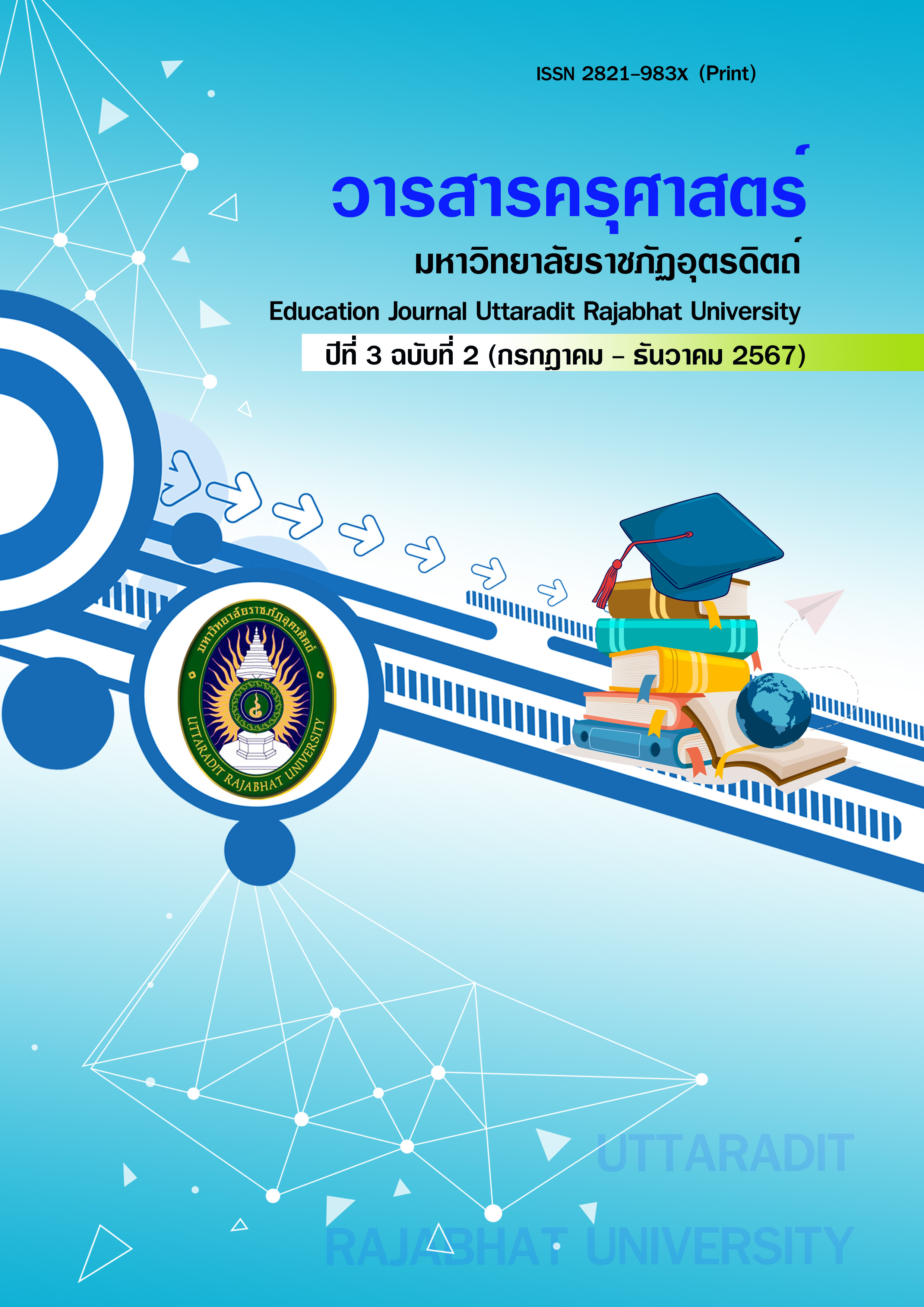Developing Mathematics Learning Achievement on Addition and Subtraction of Whole Numbers up to 1,000 Using Skill-Building Worksheets and the KWDL Learning Technique for Grade 2 Students at Ban Nai Muang School
Main Article Content
Abstract
This study intends to: (1) evaluate the mathematics learning outcomes of Grade 2 students regarding the addition and subtraction of whole numbers up to 1,000 before and after instruction utilizing worksheets integrated with the KWDL learning technique; (2) create and assess the efficacy of mathematics worksheets on addition and subtraction of whole numbers up to 1,000 for Grade 2 students, adhering to the 80/80 efficiency standard; and (3) measure the satisfaction of Grade 2 students concerning the utilization of mathematics worksheets combined with the KWDL learning technique.
The target group comprised 26 Grade 2 pupils from Ban Nai Muang School, governed by the Uttaradit Primary Educational Service Area Office 1, in the first semester of the 2024 academic year. The research instruments comprised: (1) seven lesson plans for mathematics focused on the addition and subtraction of whole numbers up to 1,000; (2) mathematics worksheets on the same subject, categorized into 14 sets; (3) a 20-item multiple-choice mathematics achievement assessment; and (4) a 10-item student satisfaction survey utilizing a 5-point Likert scale. The data were evaluated utilizing mean, percentage, standard deviation, and pretest-posttest comparisons.
The results of the study were as follows
- Students' post-learning performance in mathematics was markedly superior to their pre-learning performance at the .05 level of significance.
- The maths worksheets attained an efficiency score of 88.71/82.50, exceeding the 80/80 efficiency standard.
- Overall, students' pleasure with the mathematics worksheets utilizing the KWDL learning technique was assessed as "high."
Article Details

This work is licensed under a Creative Commons Attribution-NonCommercial-NoDerivatives 4.0 International License.
Faculty of Education Journal Uttaradit Rajabhat University It is a medium for disseminating research results. Academic work Any opinions expressed in the article are solely the personal opinions of the author. Faculty of Education Uttaradit Rajabhat University and the editorial team does not necessarily have opinions that are consistent with those expressed in the article in any way. and is not considered the responsibility of the Faculty of Education Uttaradit Rajabhat University and editorial team
References
กระทรวงศึกษาธิการ. (2560). ตัวชี้วัดและสาระการเรียนรู้แกนกลางกลุ่มสาระการเรียนรู้คณิตศาสตร์ (ฉบับปรับปรุง พ.ศ.2560) ตามหลักสูตรแกนกลางการศึกษาขั้นพื้นฐาน พุทธศักราช 2551. กรุงเทพฯ: กระทรวงศึกษาธิการ.
จารุวรรณ สิงห์ม่วง และสุภาภรณ์ แจ้งสุข. (2560). การพัฒนาผลสัมฤทธิ์ทางการเรียนคณิตศาสตร์ เรื่อง การบวก การลบ การคูณ และการหารจำนวนที่มีหลายหลักของนักเรียนชั้นประถมศึกษาปีที่ 5 โดยใช้แบบฝึกทักษะ. วารสารราชนครินทร์ 14(31): 13-19.
จุฑามาศ เจริญธรรม. (2550). การจัดการเรียนรู้กระบวนการคิด. นนทบุรี : สุรัตนการพิมพ์.
ชญาณิศา เป็งจันทร์. (2560). การจัดการเรียนรู้โดยใช้เทคนิค KWDL เพื่อพัฒนาผลสัมฤทธิ์ทางการเรียนคณิตศาสตร์ เรื่องโจทย์ปัญหาของนักเรียนชั้นประถมศึกษาปีที่ 6. (ปริญญาครุศาสตรมหาบัณฑิต), มหาวิทยาลัยราชภัฏเชียงราย.
ชษาพิมพ์ สัมมา. (2562). การพัฒนาแบบฝึกเสริมทักษะคณิตศาสตร์ เรื่อง ทศนิยมและเศษส่วนชั้นมัธยมศึกษาปีที่ 1 ที่ได้รับการจัดการเรียนรู้ตามรูปแบบการสอนแบบร่วมมือกันเรียนรู้ด้วยเทคนิค STAD. วารสารสถาบันวิจัยญาณสังวร. (10)1, 37-53.
ทิวาพร แก้วคำสอน. (2564). การพัฒนาแบบฝึกทักษะคณิตศาสตร์ เรื่อง ความน่าจะเป็น โดยใช้การเรียนรู้แบบร่วมมือเทคนิค TAI ร่วมกับเทคนิค KWDL สำหรับนักเรียนชั้นมัธยมศึกษาปีที่ 3. วารสารบัณฑิตศึกษา. 80(18), 96-104.
สุนันทา สุนทรประเสริฐ. (2549). เอกสารชุดปฏิรูปการเรียนรู้ของครูตาม พ.ร.บ. การศึกษาแห่งชาติ: การสร้างแบบฝึกการผลิตสื่อนวัตกรรมการเรียนการสอน เล่ม 2. ชัยนาท : ชมรมพัฒนาความรู้ด้านระเบียบกฎหมาย.
อรรถสิทธิ์ ปัญจวรานนท์. (2548). ระบบผู้เชี่ยวชาญสำหรับสอนวิชาคณิตศาสตร์ระดับประถมศึกษา.วิทยานิพนธ์ วท.ม. (วิทยาการคอมพิวเตอร์). กรุงเทพฯ : บัณฑิตวิทยาลัย มหาวิทยาลัยเกษตรศาสตร์.

